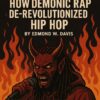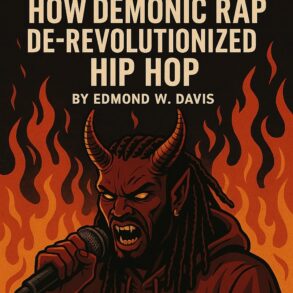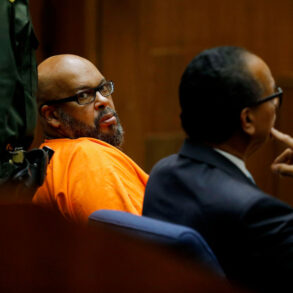In its 50th year, hip-hop is in a remarkable place of leadership. Despite the mainstream forces that long sidelined hip-hop its rightful impact for decades, what began as a cultural expression now has significantly impacted business, music and culture on a global scale.
Beginning in the 1990s, hip-hop music and culture emerged as a key pedagogical tool in education at all levels. From dancing and rhyming in K-12 classrooms to university-level classes and archives, artist-centric studies and fellowships, the use of hip-hop in education has evolved significantly over the decades.
Teaching Hip-Hop As History
What hip-hop artists have been expressing about race, violence, economic class and beyond for the past 50 years is used as a powerful education tool in the present. Dan Charnas, Associate Arts Professor at New York University, suggests that hip-hop is crucial in overall education. His popular course on the late producer and composer J. Dilla — who produced for artists including A Tribe Called Quest, Common and Janet Jackson — inspired Charnas to write the New York Times bestseller Dilla Time.
“Hip-hop is just part of a longer popular music tradition which sits very squarely in any history — cultural, music or otherwise. So teaching hip-hop is just teaching history,” Charnas tells GRAMMY.com, adding that not incorporating hip-hop into his curriculum would “be an incomplete education of our world.
“It’s funny,” he continues, citing an episode of [Rick Rubin‘s] podcast. “When I was on last year, he’s like, ‘So you teach hip-hop, what’s that like?’ It was such a weird question! He says when he was a student at Tisch, where I teach, hip-hop was the thing you did instead of school. He comes from a generation that had no context for it being somewhat academic.”
Charnas certainly isn’t the first academic to study hip-hop. He cites Brown University professor Tricia Rose’s 1994 book Black Noise: Rap Music and Black Culture in Contemporary America as a key breakthrough to pave the way for hip-hop scholarship.
The study of hip-hop has also experienced significant development — from history-focused socio-cultural studies, to deep dives on specific artists. Decades after Howard University began talking about hip-hop studies in 1991 and the University of California, Berkeley created a course to study the late rapper Tupac Shakur in 1997, 17-time GRAMMY winner Kendrick Lamar is now the subject of dedicated college courses around the country. Lamar is among the artists who exemplify the way hip-hop culture transcends genre and form, whose work is a living document of society.
Good kid, m.A.A.d city has themes of “gang violence, you’ve got child-family development in the inner city, you’ve got drug use and the war on drugs, you’ve got sex slavery, human trafficking — a lot of the things that are hot-button issues for today are just inherent in the world of Compton, California,” Georgia Regents University instructor Adam Diehl told *USA Today.
Diehl introduced a course on Lamar in 2014, and today lectures on hip-hop at Augusta University. What if people had said, ‘we shouldn’t study Toni Morrison or Hemingway or Emily Dickinson because they’re too new?” he continued to USA Today. “Everything was new or too popular or too risqué at the time, but I just think that great stories last and the story of good kid, m.A.A.d city, is lasting.”
“In my literature courses, music is considered a critical text,” said Dr. Regina N. Bradley, an assistant professor of English and African Diaspora Studies at Kennesaw State University in Georgia. In one class, her students delve into Black protest songs. In another, they examine the music of Southern rap trailblazers like Outkast. Both help students connect the past to the present.
“Music is pedagogy. It’s an archive and so real,” she explained. “When you can show and prove to students that the history of civil rights for Black folks is not linear but cyclical, they understand and value that their experiences and what they are witnessing on a daily basis are reflections of the past in the present. History lives in the music; it lives in the culture… As a professor, it is my job to show students the dots, connect them a little bit and set them on their own journeys of discovery.”
Hip-hop is also used as a tool for teaching K-12 students in a wide variety of ways, whether it’s learning and performing rhymes in math classes or analyzing current issues like police brutality and social justice. Nonprofits such as Oakland’s Hip Hop For Change work with local schools to teach foundational elements such as MCing, DJing, graffiti and breakdancing. Like colleagues around the country, their instructors also use the culture to share practical knowledge about the world.
Hip-Hop Archives And Fellowships Advance Studies Of The Form
The creation of hip-hop archives and fellowships at universities have been a significant educational development over the past 15 years, beginning when Cornell University opened The Cornell Hip-Hop Collection in 2007. The CHHC features over a quarter million digital and physical artifacts, including recordings, party flyers, graffiti art, magazines, books and personal archives. Media from artists and documentarians such as MC Grandmaster Caz, photographers Joe Conzo and Ernie Paniccioli, film director Charlie Ahearn (best known for the seminal hip-hop movie Wild Style) and former Def Jam publicist and author Bill Adler are all at CHHC.
A first for the West Coast, UCLA’s Hip-Hop Initiative followed the CHHC in 2022. The university’s Ralph J. Bunche Center for African American Studies is creating a digital archive and offering postdoctoral fellowships, among other missions. Public Enemy’s Chuck D is the Hip-Hop Initiative’s first artist-in-residence.
“It’s been incredible to witness and mentor so many students as they reach into the histories and experiences of the communities that gave rise to hip-hop,” UCLA professor and advisory board member Cheryl Keyes said in a statement. “There’s a richness and depth and context that are yet to be discovered and revealed, and this initiative will support much more of that.”
“As we celebrate 50 years of hip-hop music and cultural history, the rigorous study of the culture offers us a wealth of intellectual insight into the massive social and political impact of Black music, Black history and Black people on global culture — from language, dance, visual art and fashion to electoral politics, political activism and more,” added Associate Director and Initiative Leader H. Samy Alim.
One of the most prominent universities in the United States offers resident fellowships for the advanced study of hip-hop music and culture. In 2013, The Hiphop Archive and Research Institute (HARI) and the Hutchins Center for African & African American Research at Harvard University launched the Nasir Jones Hiphop Fellowship. Named after GRAMMY-winning hip-hop artist Nas, the fellowship is funded by an anonymous donor. Past recipients include Dr. Bradley of Kennesaw State. (Harvard’s HARI also offers an additional resident fellowship.)
“Hip-hop is important like computer science,” Nas said in a press conference announcing the Jones fellowship. “The world is changing. If you want to understand the youth, listen to the music. This is what’s happening right underneath your nose.”
Having fellowships and archives help ensure the continued study of hip-hop and offer hope to solidify its legacy for the next 50 years and beyond.
Teaching The Elements
As hip-hop education broadens and deepens at every academic level, there may also be the formation of more dedicated schools and increased educational attention to the original elements of hip-hop: DJing, MCing, beatboxing, graffiti art and breakdancing.
The foundational history and practice of DJing is now taught in courses at major institutions, including Stanford University and New School in New York City, and incorporated into curricula at music production schools such as Berklee College of Music in Boston and Pyramind in San Francisco. One-off workshops and day classes are also sometimes offered at select record stores such as Superior Elevation in Brooklyn.
Dedicated technical DJ schools are training future stars on and offline. After teaching DJ skills to private and college students for years, Queens, N.Y.-based DJ Rob Swift started his own Brolic Army DJ School to teach advanced skills, host masterclasses with other legends and host student challenges online.
Another excelling technical DJ school is Beat Junkie Institute of Sound (BJIOS), which trains students in DJing and production both online and at a brick and mortar location in Glendale, California. Like their friend and colleague Swift and his X-Ecutioners crew, the Beat Junkies DJs came to international prominence in the ’90s as champions on the world battle DJ circuit.
As with MCing, graffiti and breakdancing, women DJs have been both influential and underrepresented in rap culture, but that may be changing. BJIOS has a supportive division for women and girls called Ladies of Sound to serve over half of the student body and offers a yearly scholarship for women in honor of the late Pam The Funkstress, the DJ of choice for Prince on his final tour, in conjunction with Pyramind and the Purple Pam Foundation.
A Future In Physical Education
The world is at the precipice of a new frontier in hip-hop influenced physical education thanks to breakdancing, which will be an official Olympic sport beginning with the Paris 2024 Games. This official recognition could foster the need for new learning opportunities all across the globe at K-12 schools, universities, dance studios and specialized sports schools.
This is already starting to happen on the academic front on the East Coast. Philadelphia’s Hip-Hop Fundamentals brings professional breakdancing workshops into K-12 schools, using movement alongside academic and social teaching.
Princeton University lecturer and Hearst Choreographer-in-Residence Raphael Xavier offers a college course called Introduction to Breaking: Deciphering its Power that “gives equal weight to scholarly study and embodied practice, using both approaches to explore the flow, power and cultural contexts of Breaking.”
Hip-hop has grown from being dismissed as a short-term fad to becoming a vital lens for studying the world. The acceleration of the latter over the past 15 years alone suggests much more to come for hip-hop and education.
The most important teacher of this culture is hip-hop music, and it will continue to evolve intellectually, spiritually and physically over time and all across the planet. In that respect, the educational potential has only just begun to be understood.
Working For Students: How Music Industry Professionals Find Fulfillment In Education
This post was originally published on this site be sure to check out more of their content.






